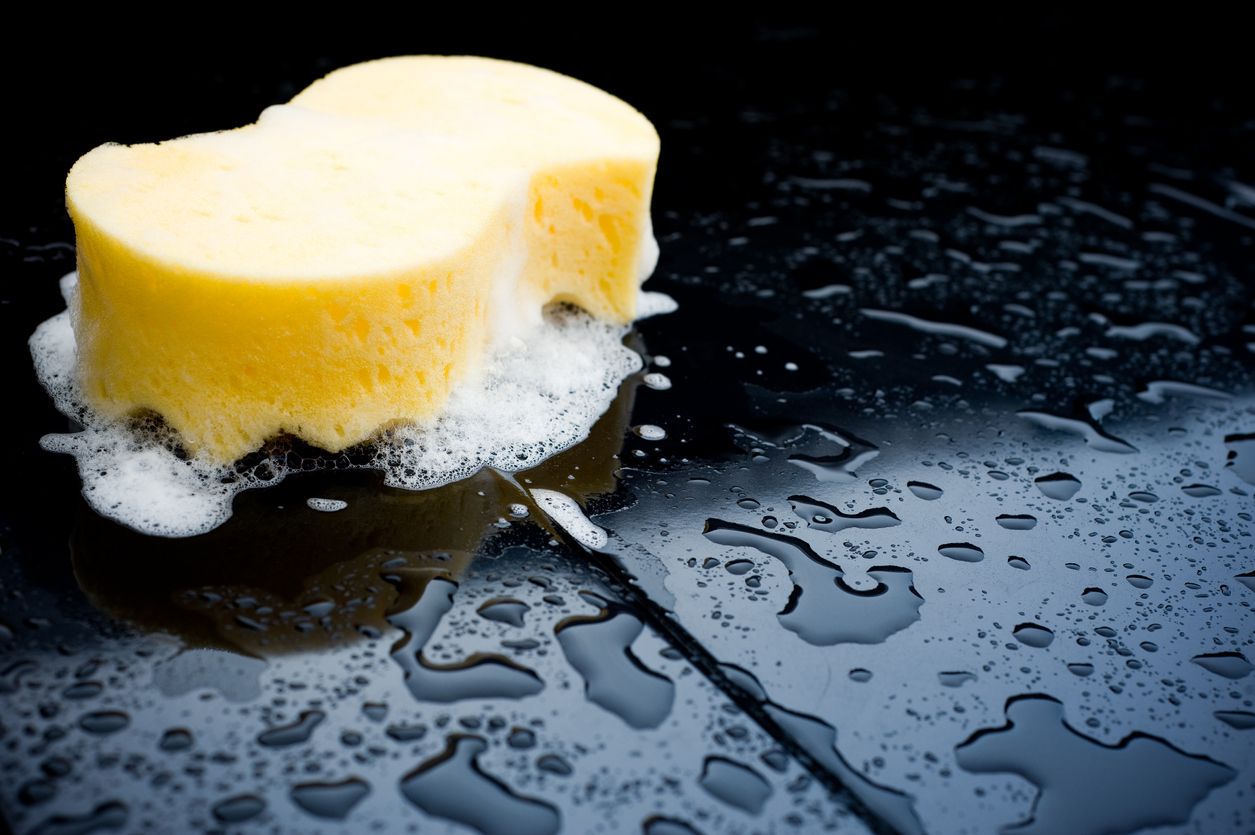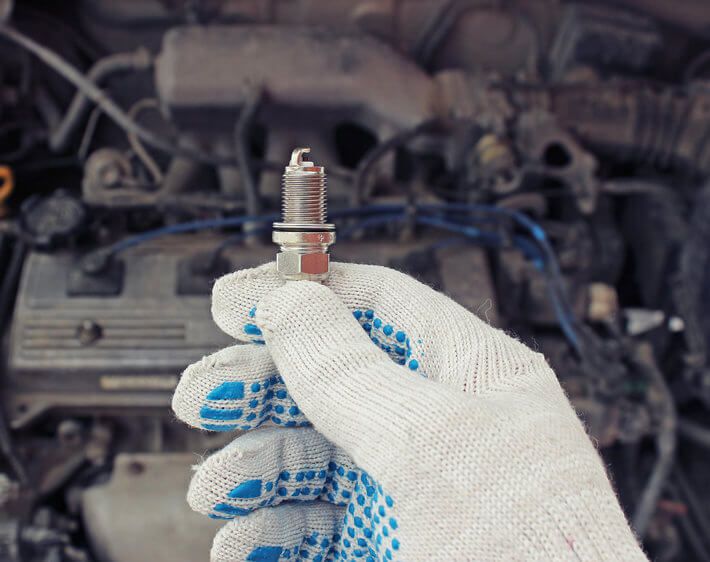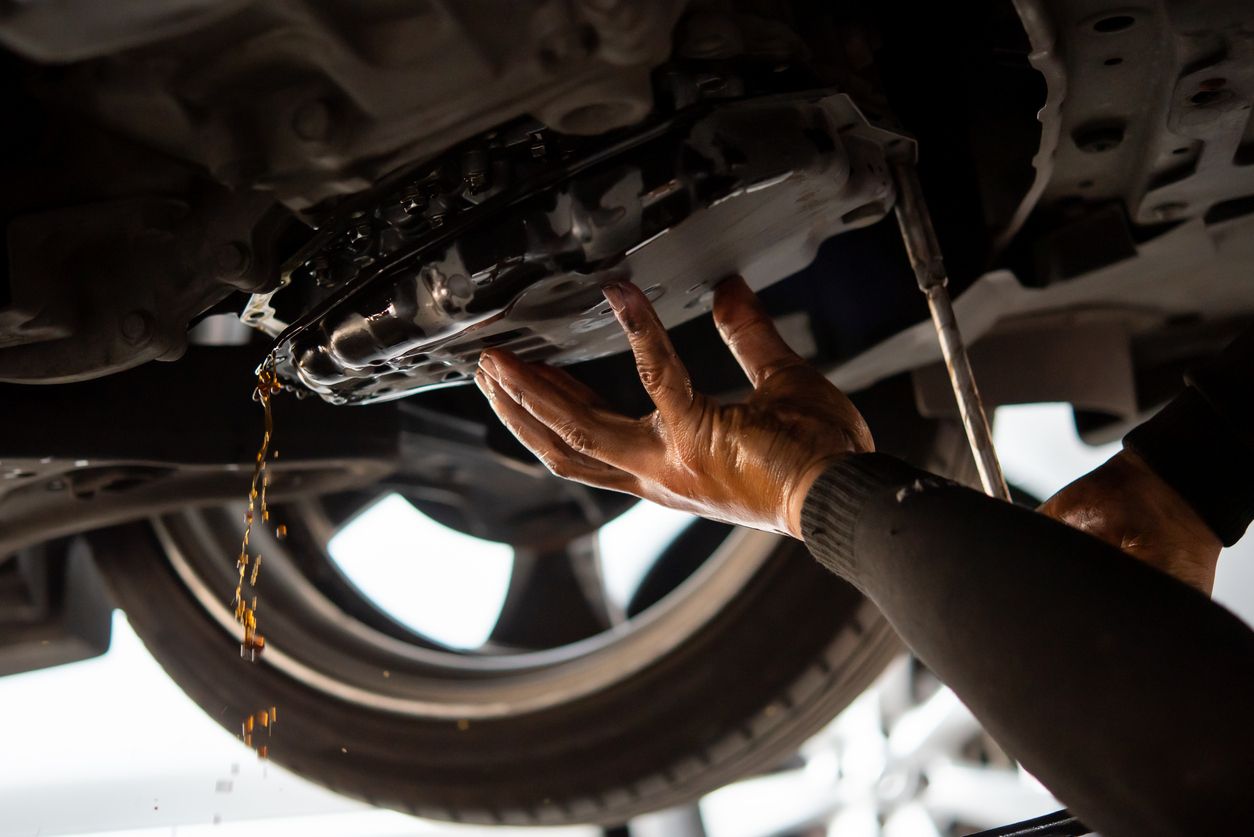You’re no stranger to cleaning your car, and you know it’s safe to wash the exterior. But are there other parts of your car you should be cleaning, too? What about those oily, gunky, and dirty components that live under your hood? Or those often overlooked spaces in your interior? Learn which car parts you can safely clean at home and how to wash them efficiently.
1. Tires
Your tires are the only part of your vehicle that directly touch the ground. This means they pick up all kinds of stuff like dirt, small rocks, and even nails! Including your tires when you wash your car is a great way to keep them in good condition.
How to Clean Your Tires
The soapy water that drips down from the body of your car while you’re washing it isn’t quite enough to get your tires clean. Thankfully, it’s easy to clean your tires. Simply spray them down to remove any loose dirt, use a soft-bristled brush and soapy water to scrub the tires (and the wheels!), rinse the soap off, and dry them.
While cleaning your tires, it’s a good idea to also perform a quick inspection. Make sure your tires don’t have any visible punctures or tears, check the air pressure, and look at the tread depth. It's necessary to have a tire tread depth of more than 2/32”. In most states, it is legally required to have a tread depth of more than 2/32” to pass state inspection. If you think it might be time for a new set of tires or a rotation, stop by Firestone Complete Auto Care for routine maintenance services. We can also perform a free tire check for you.
2. Undercarriage
The undercarriage isn’t a part of your vehicle you look at regularly, or maybe even at all. That makes it easy to overlook when cleaning. Because it’s so close to the ground, the undercarriage easily collects dirt and dust. Washing the undercarriage is especially important if you drive on salted roads, which can cause corrosion and rust.
"It’s an issue that, if not properly checked, could cost hundreds or thousands of dollars in problems," reports Fox13Memphis.com.
How to Clean the Undercarriage
Your undercarriage is a difficult place to reach, especially when a car is lower to the ground. One of the easiest ways to clean your undercarriage is by angling a power washer or hose under your vehicle to get rid of all the dirt and grime. Or, run your car through a car wash and select the undercarriage option!
If you’ve recently experienced an oil leak, you may be wondering how to clean oil off your undercarriage. Unfortunately, water alone isn’t going to get the job done. You will need to use a degreaser or similar product to get the oil off and leave the bottom of your car squeaky clean.
3. Engine Bay
After you’ve wiped down and waxed the hood, it’s time to take a look underneath it. Your engine bay might not be exposed to the elements, but dirt and debris can still make their way inside. Plus, you have to worry about possible oil and other fluid leaks making a mess.
How to Properly Clean Under the Hood of Your Car
Your engine produces a lot of heat when it’s running, so you need to make sure the bay is completely cooled down before getting started. Next, you’ll need to take some other precautionary steps, including ensuring any caps are secure and disconnecting the battery cables (verify battery cable removal procedure in your owner's manual before disconnecting). You'll also want to cover any electrical or sensitive parts such as the battery, ignition wires, engine control module, and electrical connectors with plastic bags and electrical tape.
Do a quick air clean using a vacuum or compressed air (if using compressed air, wear safety goggles to ensure that dust or debris don't get into your eyes). This will help knock out any loose dirt before focusing on a deeper clean. Depending on the condition of your engine bay and whether you’ve had any oil leaks recently, you might need to know how to remove grease from car parts. Similar to the undercarriage, degreaser will play a big role here.
Trying to figure out how to clean metal car parts you see in the bay? Generally, gentle scrubbing with a brush can get metal and aluminum parts clean. After you’ve degreased, scrubbed, and wiped, rinse your engine bay and dry it. You can use equipment like an air compressor or leaf blower to help speed up the process, but you should also leave your hood open for at least an hour to make sure everything dries.
Note: Don’t forget to remove the temporary coverings.
Your engine bay contains many essential parts, so you want to take your time while cleaning to ensure that everything is in top shape. Bring your car to the nearest Firestone Complete Auto Care for a free vehicle inspection if you notice something looks off.
4. Battery Terminals
Once you've finished cleaning other parts of the engine bay, you’ll want to take a look at your battery terminals. Corrosion can build up on the terminals and negatively impact your battery’s performance, which is why it’s crucial to clean this part.
How to Clean Battery Terminals
In many vehicles, disconnecting a battery without having a memory saver on hand can lead to potential issues, including resetting drive monitors, disabling the navigation system, or even resetting engine control parameters that can cause the engine to run rough after reconnecting. Check your owner's manual before disconnecting the battery cables to circumvent these potential issues.
You can often clean your battery terminals with stuff you already have around the house. After consulting your owner's manual and undoing the battery cables, use a simple baking soda and water mixture and an old toothbrush to carefully scrub away the corrosion. Rinse off any residue, dry the terminals, add a bit of petroleum jelly, and you’re good to go! And don’t forget to reconnect the battery!
5. Air Vents
You vacuum and wipe down the inside of your vehicle, but do you pay any attention to the air vents? While the cabin air filter works hard to keep out debris, it might not always be able to catch tiny dust particles, which can then build up in your vents.
How to Clean Air Vents
When it comes to areas like the vents and cup holders, you need to know how to clean small spaces in a car. There are a few items you can use, such as air compressors, old toothbrushes, Q-Tips, and paintbrushes. For your air vents, try wrapping a microfiber cloth around a popsicle stick or butter knife and use that to reach between the slats.
Why You Should Clean Car Parts
Routinely cleaning more than just the outside of your car not only keeps your vehicle looking its best, but it can also help certain parts last longer by preventing dust, corrosion, rusting, and gunky buildup. Plus, it allows you to spot anything amiss before it becomes a bigger problem.
Did you find more than just a dirty engine bay under your hood? Visit your local Firestone Complete Auto Care, and our expert technicians will take care of all your maintenance needs.



